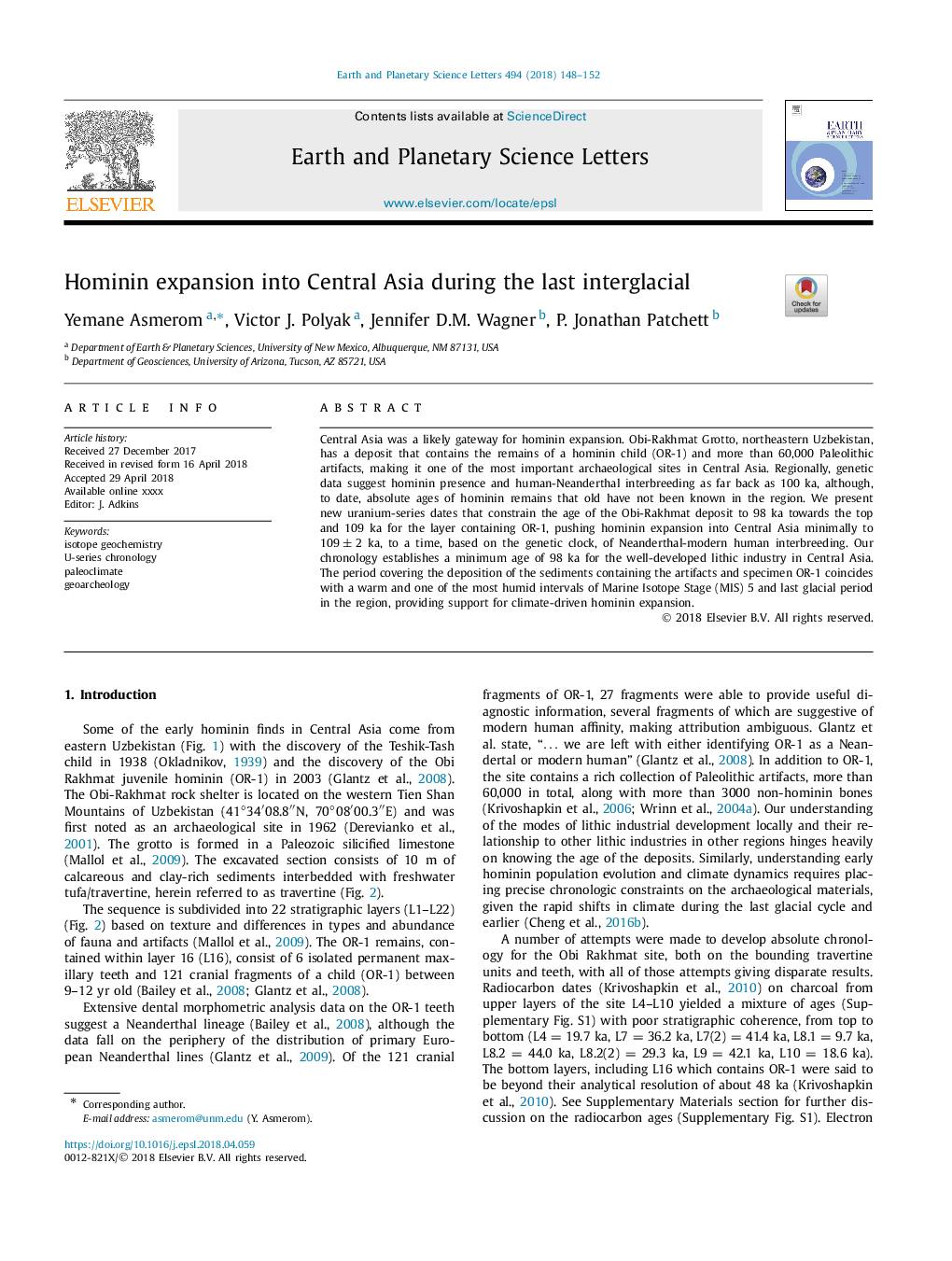| Article ID | Journal | Published Year | Pages | File Type |
|---|---|---|---|---|
| 8906837 | Earth and Planetary Science Letters | 2018 | 5 Pages |
Abstract
Central Asia was a likely gateway for hominin expansion. Obi-Rakhmat Grotto, northeastern Uzbekistan, has a deposit that contains the remains of a hominin child (OR-1) and more than 60,000 Paleolithic artifacts, making it one of the most important archaeological sites in Central Asia. Regionally, genetic data suggest hominin presence and human-Neanderthal interbreeding as far back as 100 ka, although, to date, absolute ages of hominin remains that old have not been known in the region. We present new uranium-series dates that constrain the age of the Obi-Rakhmat deposit to 98 ka towards the top and 109 ka for the layer containing OR-1, pushing hominin expansion into Central Asia minimally to 109±2 ka, to a time, based on the genetic clock, of Neanderthal-modern human interbreeding. Our chronology establishes a minimum age of 98 ka for the well-developed lithic industry in Central Asia. The period covering the deposition of the sediments containing the artifacts and specimen OR-1 coincides with a warm and one of the most humid intervals of Marine Isotope Stage (MIS) 5 and last glacial period in the region, providing support for climate-driven hominin expansion.
Related Topics
Physical Sciences and Engineering
Earth and Planetary Sciences
Earth and Planetary Sciences (General)
Authors
Yemane Asmerom, Victor J. Polyak, Jennifer D.M. Wagner, P. Jonathan Patchett,
